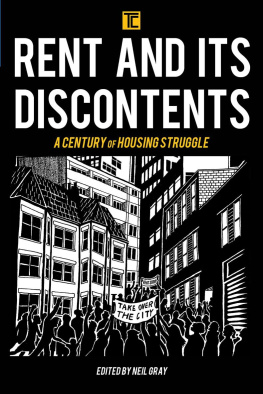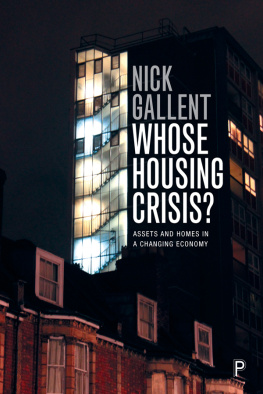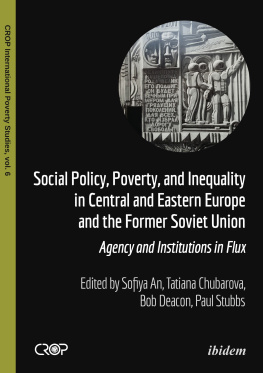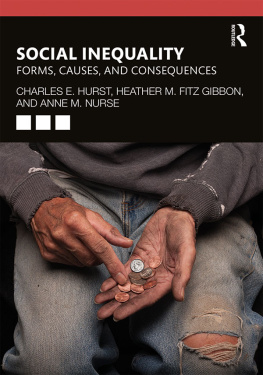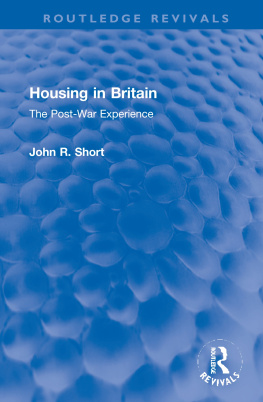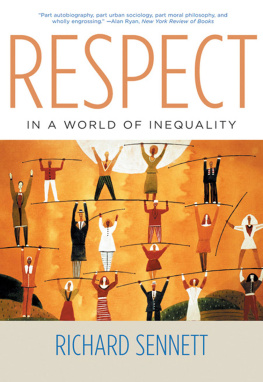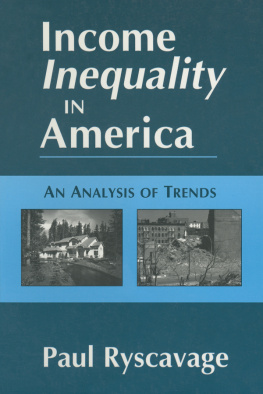First published in 1979 by Saxon House, Teakfield Ltd
This edition first published in 2022
by Routledge
2 Park Square, Milton Park, Abingdon, Oxon OX14 4RN
and by Routledge
605 Third Avenue, New York, NY 10158
Routledge is an imprint of the Taylor & Francis Group, an informa business
1979 Paul N. Balchin
All rights reserved. No part of this book may be reprinted or reproduced or utilised in any form or by any electronic, mechanical, or other means, now known or hereafter invented, including photocopying and recording, or in any information storage or retrieval system, without permission in writing from the publishers.
Trademark notice: Product or corporate names may be trademarks or registered trademarks, and are used only for identification and explanation without intent to infringe.
British Library Cataloguing in Publication Data
A catalogue record for this book is available from the British Library
ISBN: 978-1-03-204163-6 (Set)
ISBN: 978-1-00-319078-3 (Set) (ebk)
ISBN: 978-1-03-204116-2 (Volume 1) (hbk)
ISBN: 978-1-03-204133-9 (Volume 1) (pbk)
ISBN: 978-1-00-319062-2 (Volume 1) (ebk)
Publishers Note
The publisher has gone to great lengths to ensure the quality of this reprint but points out that some imperfections in the original copies may be apparent.
Disclaimer
The publisher has made every effort to trace copyright holders and would welcome correspondence from those they have been unable to trace.
Paul N. Balchin 1979
All rights reserved. No part of this publication may be reproduced, stored in a retrieval system, or transmitted in any form or by any means, electronic, mechanical, photocopying, recording, or otherwise without the prior permission of Gower Publishing Company Limited.
Published by
SAXON HOUSE, Teakfield Limited.
Reprinted 1981 by Gower Publishing Company Limited,
Croft Road, Aldershot, Hants GU11 3HR, England.
ISBN 0 566 00274 4
PRINTED IN GREAT BRITAIN
Residential Location Theory and the Problems of Private Housing in the Inner Cities
In an attempt to explain why there are extensive areas of deteriorated residential properties in our cities and to comprehend the consequences of housing improvement policy in a specific area, it is necessary initially to analyse the working of the urban housing market and to consider some of the interdependencies which define the urban system. The housing market is unlike the market for other goods and services in that the product is spatially unique, very durable and heterogeneous. In considering the housing market, the spatial distribution of the product is one of the principal factors of the analysis. But the market is not perfect; government intervention in the form of zoning restrictions, rent control or regulation, subsidies and public housing development have greatly influenced the forces of supply and demand. The institutional arrangements for mortgage finance and income tax allowances on mortgage interest payments have also had a major effect. In this analysis these factors will be mainly ignored and simplifying assumptions will be made. These are: an urban area with a single centre, perfect knowledge on the part of sellers and buyers, rational behaviour and the assumption that the seller or producer of the dwellings aims to maximise revenue, and the buyer aims to maximise his satisfaction or utility. It is recognised that although:
the internal structure of any city is unique in its particular combination of detail...in general there is a degree of order underlying the land use patterns of individual cities. (Garner, 1970, pp.338-339).
The Concentric Zone and Sector Models
The rapid growth of cities in the United States during the late nineteenth and early twentieth centuries was characterised by an outward invasion of low income households into formerly high income areas. The concentric zone model illustrates this process, and has often been used to explain the pattern of urban land uses throughout the industrialised world. The model is particularly relevant to the problems of the inner city.
It is assumed that accessibility and values diminish with equal regularity in all directions from a central point in an urban area. Distortions caused by variations in topography and differential accessibility are ignored and it is argued that patterns of land use will be arranged in regular concentric zones. Based on his studies of A).

Figure 1.1 The concentric zone model (A) and sector model of urban structure (B)
The transitional zone is the main area of dilapitated housing, and it also includes light manufacturing, wholesaling and other (mainly small) businesses. Blighted conditions and slums result in much of this zone being referred to as the twilight area. It is the zone in which there is the greatest need for renewal. It surrounds the central business district (CBD) which forms the heart of the citys commercial, cultural and social life as well as being the focus of urban transport. The transition zone is surrounded by the low class residential zone which, according to Burgess, is:
inhabited by the workers in industries who have escaped from the area of deterioration but who desire to live within easy access of their work (p.55).
This in turn is surrounded by a zone of middle and high income housing characterised by single family dwellings. Around this there is an outer zone beyond the city limits, a commuter belt of suburban and satellite communities. Burgess acknowledged that neither Chicago nor any other urban area fit exactly into this ideal scheme.
With population and economic growth, urban land use is influenced first by centripetal forces of attraction, second by centrifugal forces of dispersion and third, by forces of spatial differentiation. There is, according to Burgess, the:
tendency of each inner zone to extend its area by the invasion of the next outer zone. This aspect of expansion may be called succession , a process which has been studied in detail in plant ecology .... In the expansion of the city a process of distribution takes place which sifts and sorts and relocates individuals and groups by residence and occupation (p.56).
A result of this process is that the oldest residential property will be centrally located (in parts of the CBD but mainly within the zone of transition) and the newest housing will tend to be in the commuter zone. Whereas the higher income groups are able to afford the newest property and so locate mainly in the outer urban area, the lowest income groups are only able to afford the oldest property which will be mainly within the twilight areas of the transition zone.





